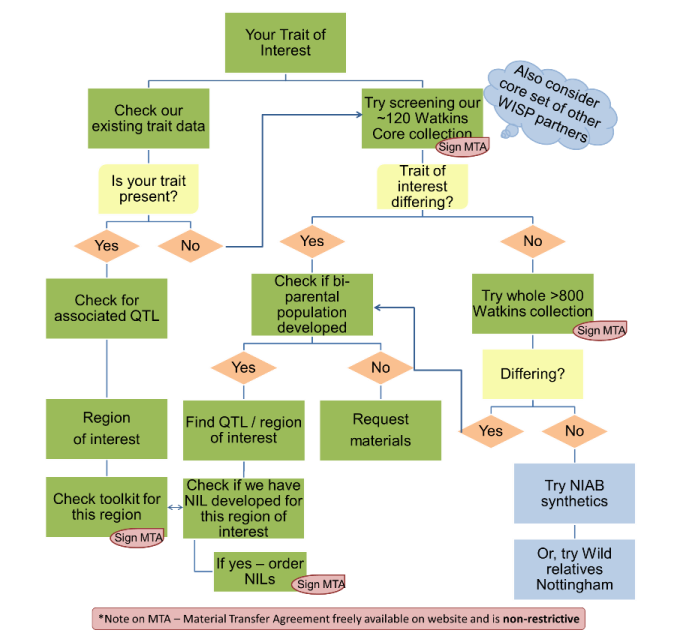Designing Future Wheat (DFW) WP3 Landraces
The BBSRC funded DFW Institute Strategic Programme (ISP), spans eight research institutes and universities and aims to develop new wheat germplasm containing the next generation of key traits.
It takes over from the WISP consortium, again a BBSRC funded collaborative programme, which brought together experts in wheat genetics and breeding from five institutions. WISP was a comprehensive pre-breeding programme - the first of its kind in over 20 years - aiming to guarantee the sustainability of wheat production against the background of growing global population and changing environment.
How to Use the DFW WP3 / WISP Landrace Resources
Click on the boxes to go to the relevant resource.

Specific goals of the project
- Understand the genetics behind factors limiting grain yield, such as drought tolerance, plant shape and resistance to pests and diseases.
- Identify new and useful genetic variation from related species and sources of wheat germplasm not adapted to target environments.
- Cross wheat lines to produce germplasm that allows the identification of genes influencing key traits.
- Generate a database of genetic markers, for use in precision breeding.
The good news for growers is that both the new germplasm and the information generated by this project will be made freely available. That means plant breeders can use the germplasm to cross with their existing lines, while academics will be able to make use of it to understand the mechanistic basis of key traits in bread wheat.
The main project website is http://www.wheatisp.org/
The Exotic Bread Wheat and Landrace Pillar
The overall aim is to develop germplasm which facilitates the identification, dissection, and assessment of novel genetic variation for traits that are available in landraces and other exotic bread wheat lines, but not yet deployed in current UK germplasm, and facilitate the deployment of this variation into UK wheat breeding programmes.
